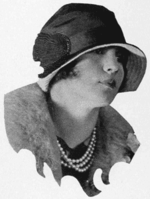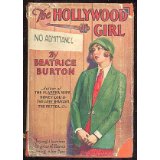 Hard to believe (for me, anyway), but the Roaring Twenties was the decade that saw the introduction of the bathroom as we know it today.
Hard to believe (for me, anyway), but the Roaring Twenties was the decade that saw the introduction of the bathroom as we know it today.
Today a typical residential bathroom combines three elements: a sink, a toilet, and bathing facilities. But throughout all history, until the twentieth century, those three had been separate. The toilet or outhouse was outside the dwelling, the washstand was in the bedroom, and bathing was usually accomplished in the bedroom or kitchen. There was a good deal of resistance to combining these–after all, since the earliest civilizations, man had tried hard to keep human waste at a distance from the living quarters. The invention of primitive flush toilets changed everything, but many people could not, at first, fathom putting cleansing functions in the same room as smelly, dirty, dangerous human waste. Initially, the indoor toilet was housed by itself in a separate room called a water closet. In fact, in many countries I’ve visited, it still is. Some have speculated that the reason for combining these elements in one room was for convenience of plumbing–it was cheaper to combine the fixtures that used running water. Tub, sink, and toilet were usually white porcelain, which was considered more sanitary.
 The “modern” bathroom starts to appear in America in wealthy homes in the early years of the twentieth century, but it doesn’t really spread to middle-class houses until the Twenties. Existing houses were renovated over the years. Often an indoor water closet would be installed first, crammed in under the stairs or in a hall closet. Or a bedroom might be turned into a bathroom with all three elements. New houses could include a modern bathroom, usually at one end of the upstairs hall near the bedrooms. Pricier houses included a separate toilet in the basement for the servants to use.
The “modern” bathroom starts to appear in America in wealthy homes in the early years of the twentieth century, but it doesn’t really spread to middle-class houses until the Twenties. Existing houses were renovated over the years. Often an indoor water closet would be installed first, crammed in under the stairs or in a hall closet. Or a bedroom might be turned into a bathroom with all three elements. New houses could include a modern bathroom, usually at one end of the upstairs hall near the bedrooms. Pricier houses included a separate toilet in the basement for the servants to use.
I’ve been careful with my passing mentions of bathrooms in my Roaring Twenties mysteries. In the third one, RENTING SILENCE, set in 1925, I describe a boarding house where a murder takes place, and it has separate facilities for the residents. I picked up some of the details from a novel, Hollywood Girl, written in 1927 by Beatrice Burton. Here is the relevant snippet from my mystery:
“There are four units on each floor,” the landlady continued as we climbed to the third floor, “each with two rooms, a parlor and a bedroom. But first, let me show you the bathing room.” We turned down the hall and walked to the door at the end. “Here is the bathtub that you would share with only three other young ladies. This other tub is for your laundry. And you see there are plenty of hooks for your clothing and towels. A colored girl comes every Friday to clean the public rooms, but residents are expected to wash the bathtub themselves after each use.” A washboard hung on a nail beside the tub, and there were several boxes of laundry soap on the shelf above it. Two shelves on the opposite wall contained a jumble of bottles and boxes of geranium bath salts, rose toilet water, lemon shampoo, and dusting powder with a pale blue puff tucked into the top.
“At the other end of the hall,” she continued, “is the water closet. It has a large window too, like this one, for the fire escape, and so the rooms are always fresh.” A door across the hall opened. A bottle-blond head stuck out, took one look at Mrs. DeWitt and the stranger and ducked back into her room. Ignoring the interruption, Mrs. DeWitt opened the door to Lila Walker’s rooms.
 I’ve now read two books by Beatrice Burton (FLAPPER WIFE and HOLLYWOOD GIRL), so I got curious about this woman who wrote in the mid-1920s–and who is helping me write my own stories today.
I’ve now read two books by Beatrice Burton (FLAPPER WIFE and HOLLYWOOD GIRL), so I got curious about this woman who wrote in the mid-1920s–and who is helping me write my own stories today.


